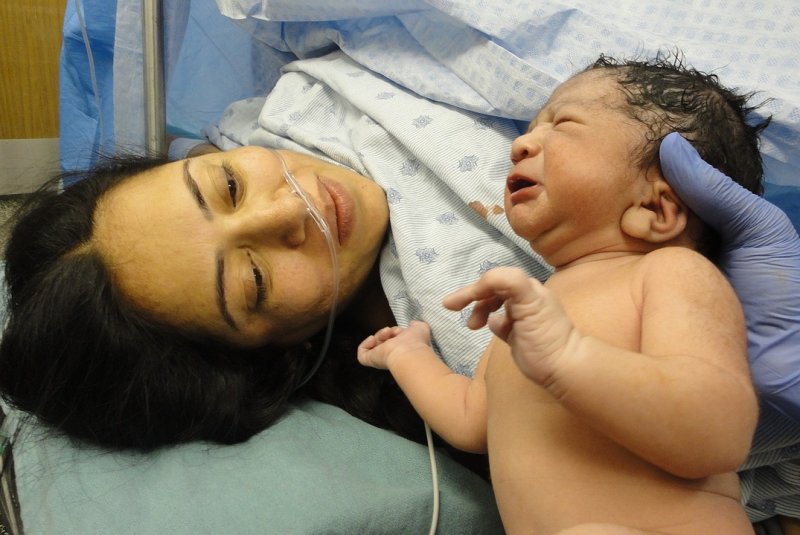Clinicians are experimenting with new educational tools designed to educate expectant mothers on healthy birthing. Photo by Sanjas/pixabay.
June 2 (UPI) -- An educational program designed to inform women with a history of cesarean sections, or C-sections, about the safety of vaginal birth does not have a significant impact on delivery decisions, according to a study published Tuesday by JAMA.
The research evaluated the effectiveness of an electronic "decision tool" -- essentially an educational app on a handheld tablet -- that promotes the safety of vaginal birth after cesarean, or VBAC.
Roughly 43 percent of the women who used the tool selected VBAC -- or slightly less than those who didn't used the tool.
"Our findings suggest that decision tools may not improve outcomes in populations that are already making informed decisions concordant with their values and undergoing trial of labor at high rates. But we continue to believe that a decision tool could increase VBAC rates," study co-author Miriam Kuppermann told UPI.
"Further research is needed to determine whether this is the case," said Kuppermann, who is director of preconception and prenatal interventions for the California Preterm Birth Initiative at the University of California-San Francisco.
In all 32 percent of all births in the United States in 2018 were C-sections, up from 21 percent in in 1996, making them the most commonly performed surgical procedure in the country, according to the Centers for Disease Control and Prevention.
Women who undergo the procedure are at increased risk for infection and other complications, which is why there are efforts to encourage VBAC, Kuppermann and her colleagues said.
However, historically, due to liability concerns, many hospitals and clinicians have not allowed women to attempt VBAC, according to Laura Attanasio, an assistant professor of health promotion and policy the UMass Amherst School of Public Health and Health Sciences. Attanasio was not part of the JAMA study.
This policy also might impact the way clinicians counsel women who have had a prior cesarean birth, and that could lead to misconceptions about safety, Attanasio told UPI.
"The high rate of cesarean delivery in the U.S. is a very significant public health issue," she said. "The availability of cesarean birth is crucial for maternal and infant health, [but] when cesareans are performed unnecessarily, there are negative consequences for maternal and infant health on a population level."
In addition, many healthcare providers emphasize the risks of VBAC over the benefits, "without ever discussing the chances of bad outcomes with repeat cesarean, such as wound infection or hemorrhage," said Ann Ledbetter, a certified nurse midwife in Milwaukee.
Health risks are associated with multiple repeat cesarean deliveries, as well, Ledbetter said.
For their research, Kuppermann and her colleagues enrolled 1,470 women with a history C-section at several hospitals across the country. Half of the women were educated on VBAC via the app, while the remainder were not, the authors said.
In all, 43.3 percent of those who used the app underwent labor, compared to 46.2 percent among those who did not. VBAC rates were 31.8 percent in both groups, the researchers said.
"Tools such as the one assessed in this study are meant to standardize the presentation of information for women so that they can weigh their options with a real understanding of those options," Attanasio said.
"I do think that these types of interventions are needed, although are not necessarily sufficient given the access barriers that also exist."
Women still dealing with the physical and emotional trauma of earlier childbirths may need counseling and support services -- as well as education -- to opt for VBAC, said Priscilla M. Nodine, an associate professor in then nurse-midwifery program at the University of Colorado College of Nursing.
"Women often have post-traumatic stress, even if they don't call it that themselves, from their prior birth," said Nodine, who has been a midwife since 1986. "Alleviating the fear of childbirth takes more time, more therapeutic discussion and trust-building between provider and patient."















